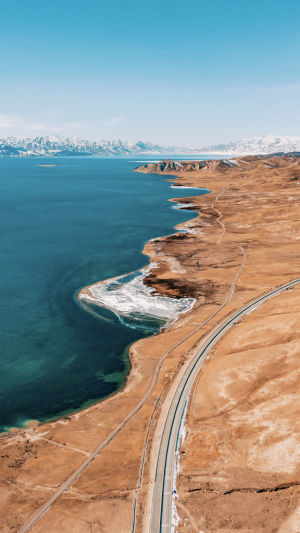Europe is home to numerous nature reserves, each playing a vital role in the preservation and protection of natural habitats and wildlife.
One prominent example is Natura 2000, an esteemed network of nature reserves proposed and established by the European Union.
This network consists mainly of 'Special Areas of Conservation' (SACs) and 'Special Protection Areas' (SPAs), which collectively serve as a comprehensive safeguard for the diverse ecosystems of Europe.
The SACs are designated as protected areas under the Habitats Directive, a legislative framework that has garnered joint recognition from the Member States. These areas are carefully chosen to conserve and restore the habitats of various endangered and rare species, ensuring their long-term survival.
By adhering to the principles of the Habitats Directive, SACs provide crucial safe havens for biodiversity, sheltering flora and fauna that would otherwise be at risk due to human activities and habitat destruction.
Similarly, the SPAs within the Natura 2000 network are established under the Birds Directive.
These areas are specifically designated to protect avian species, particularly those rare, migratory, or vulnerable species.
By safeguarding crucial habitats and providing suitable conditions for breeding, feeding, and resting, the Special Protection Areas (SPAs) make a significant contribution to the conservation of bird populations throughout Europe.
Through careful management and protection, these areas offer vital support to the continent's avian biodiversity, ensuring the survival of numerous bird species.
Beyond Natura 2000, Europe boasts a plethora of other remarkable nature reserves.
Austria, for instance, is home to the Hohe Tauern Nature Reserve, a pristine and awe-inspiring sanctuary located in the heart of the Austrian Alps.
This vast protected area encapsulates stunning landscapes, including majestic mountain peaks, deep valleys, and glacier-fed rivers.
The Hohe Tauern Nature Reserve serves as a refuge for various alpine species, some of which are endemic to the region.
Visitors to this reserve can immerse themselves in its natural beauty while appreciating the delicate balance of its ecosystems.
In the northern part of the Netherlands, lies the Wadden Sea, which is another remarkable nature reserve.
This unique coastal wetland stretches across three countries – the Netherlands, Germany, and Denmark – and is renowned for its exceptional biodiversity. The Wadden Sea is teeming with life, from millions of migratory birds that rely on its resources to an array of marine organisms that thrive in its nutrient-rich waters.
The reserve's dynamic tidal system and intertidal mudflats make it an ideal habitat for countless species.
As one of the largest wetland areas in the world, the Wadden Sea stands as a testament to the importance of preserving and protecting fragile coastal ecosystems.
Nature reserves across Europe are not only invaluable for biodiversity conservation but also serve as educational and recreational spaces for visitors.
These protected areas provide a unique opportunity for individuals to connect with nature, inspiring them to become conservation stewards.
By promoting sustainable practices and raising awareness, these reserves contribute to a broader effort to achieve a harmonious coexistence between humans and nature.
In conclusion, Europe's nature reserves, including the renowned Natura 2000 network, play a pivotal role in preserving and safeguarding the continent's natural heritage.
With their commitment to the protection of habitats and species, these reserves serve as vital sanctuaries for biodiversity.
Moreover, Europe's dedication to conservation is exemplified by notable reserves such as the Hohe Tauern Nature Reserve and the Wadden Sea, which provide unparalleled opportunities for education and recreation.
By cherishing and enhancing these nature reserves, we can ensure the long-term well-being of Europe's natural landscapes and the myriad of species that call them home.





